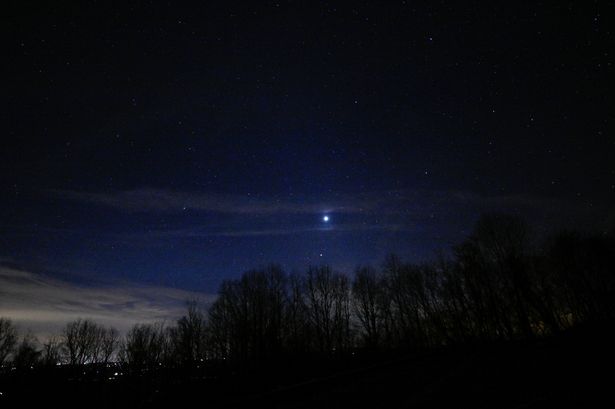A celestial spectacle is set to grace the skies above the United Kingdom, offering stargazers a rare opportunity to witness a magnificent alignment of seven planets. This extraordinary event, dubbed a “planetary parade,” will showcase Mercury, Venus, Mars, Jupiter, Saturn, Uranus, and Neptune in a breathtaking cosmic procession. While not all planets will be visible to the naked eye, the easily observable planets, combined with the potential to spot Uranus and Neptune with binoculars or a small telescope, make this a truly remarkable astronomical occurrence. The optimal viewing period will occur during specific times, offering the best chance to appreciate this unusual celestial arrangement, a spectacle not expected to repeat itself until 2040.
The alignment, while not a perfectly straight line in the traditional sense, will see the planets scattered across a broad swathe of the pre-dawn sky. This planetary gathering provides a unique opportunity to observe multiple planets within a relatively small celestial area. The visibility of each planet will vary depending on factors such as atmospheric conditions and light pollution. Venus and Jupiter, known for their brilliance, will be the easiest to spot, shining prominently against the backdrop of twilight. Mars, with its distinct reddish hue, will also be readily observable. Saturn, though less bright than Venus or Jupiter, will still be visible to the naked eye.
The real challenge for amateur astronomers lies in spotting Uranus and Neptune. These distant ice giants require optical aid, such as binoculars or a small telescope, for observation. Locating them will be facilitated by their proximity to the brighter planets, acting as celestial guideposts. This alignment presents a rare opportunity for amateur astronomers to tick these elusive planets off their observing lists. The pre-dawn sky, before the sun’s glare washes out the fainter planets, provides the optimal viewing window. Consult astronomical charts or stargazing apps to pinpoint the precise location of each planet in the pre-dawn sky.
The rarity of this planetary alignment stems from the unique orbital periods of each planet. Each planet revolves around the sun at its own pace, making simultaneous visibility from Earth an infrequent occurrence. The varying orbital inclinations further complicate the alignment. For all seven planets to appear within a relatively small section of the sky requires a fortunate confluence of their orbital positions. This alignment underscores the dynamic nature of our solar system, with planets constantly shifting in their celestial dance around the sun.
While the planetary parade is a visually captivating event, it’s essential to understand the astronomical mechanics behind it. The term “alignment” doesn’t imply that the planets are perfectly lined up in a straight line from Earth’s perspective. Instead, they appear clustered within a specific region of the sky. The planets continue to follow their individual orbital paths, maintaining vast distances between them. The apparent proximity from Earth is a matter of perspective, a celestial illusion created by our viewpoint within the solar system.
The 2022 planetary parade presents a remarkable opportunity to connect with the cosmos and appreciate the wonders of our solar system. Whether observing with the naked eye, binoculars, or a telescope, this celestial gathering promises a memorable experience for skywatchers of all levels. The chance to witness such an alignment is a reminder of the vastness of space and the intricate celestial choreography that governs the movements of planets. Mark your calendars and prepare to be captivated by this exceptional astronomical display, a spectacle not to be missed, especially considering its next occurrence won’t be until 2040. This is a chance to witness a unique moment in the celestial ballet, a fleeting glimpse of the dynamic interplay of planets in our solar system.














